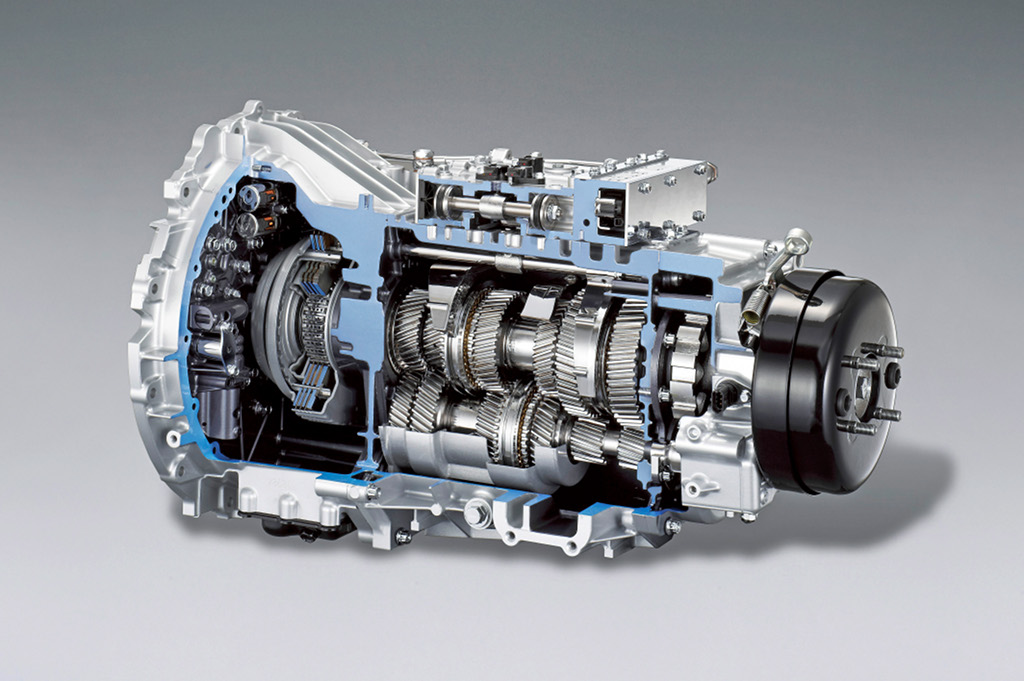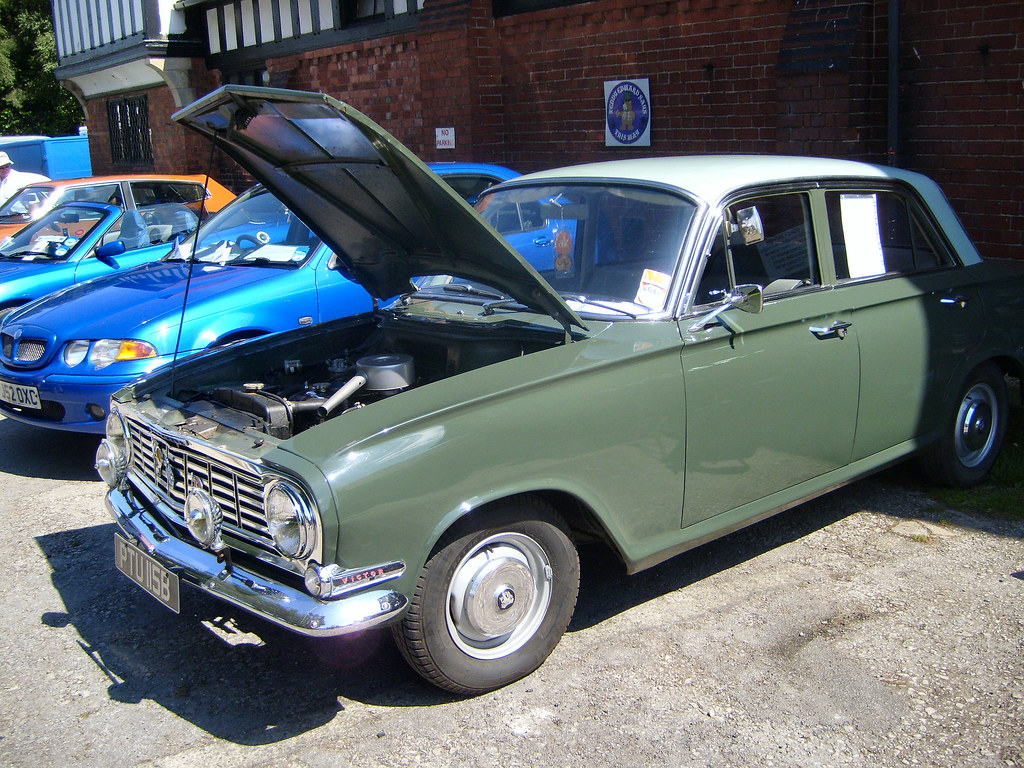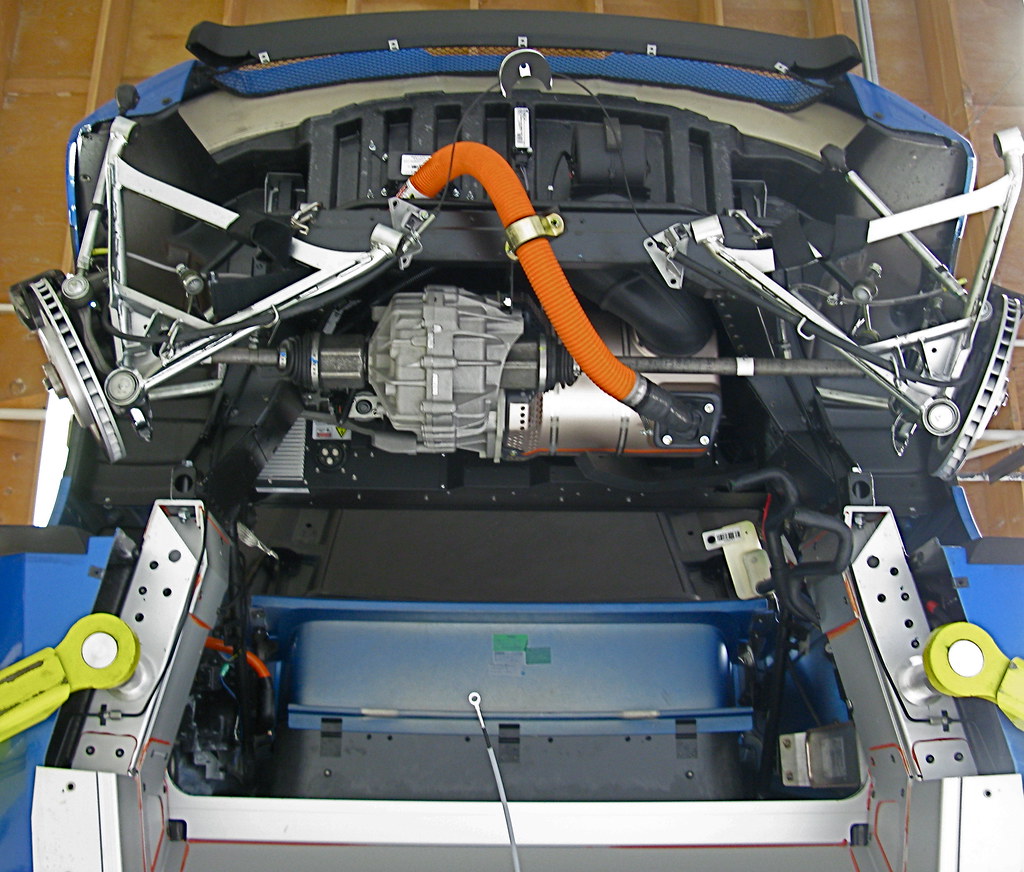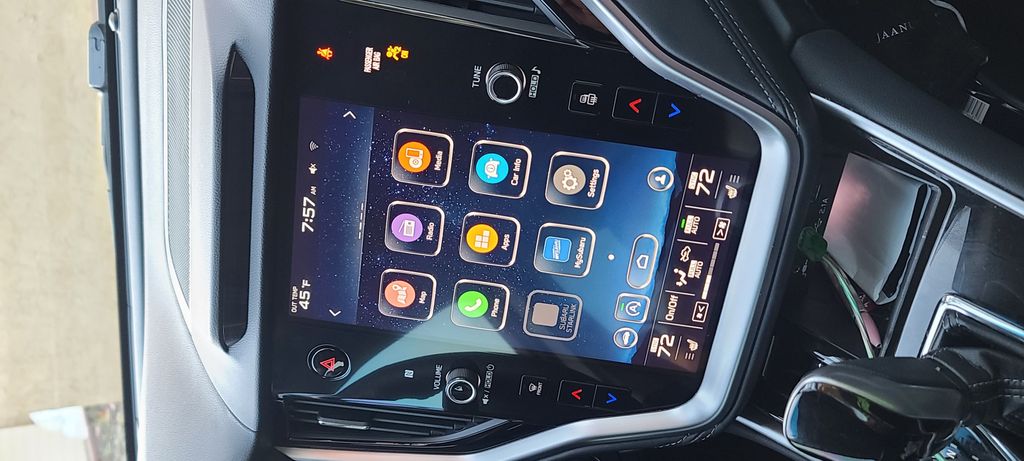
Cars are truly amazing machines, aren’t they? They ferry us to work, whisk us away on adventures, and for the most part, we tend to take their complex inner workings for granted. We fill them with gas, give them an oil change now and then, and expect them to simply *run*. And with newer models, parts and systems are designed to last for tens of thousands of miles, hinting that some systems might almost be maintenance-free.
But here’s the rub: underneath all that sleek metal and advanced engineering lies a delicate ecosystem of components, none more critical than your transmission system. It’s the unsung hero that enables your vehicle to change gears, distributing power from the engine to the wheels with a finely tuned balance. This complex dance controls RPMs while delivering the necessary torque to propel you forward, whether you’re cruising on the highway or navigating city streets.
Despite its vital role, many drivers simply don’t grasp the intricacies of the transmission system, often falling prey to widespread myths that can jeopardize their vehicle’s health and lead to significant, wallet-draining problems. These aren’t just minor misunderstandings; they’re pervasive tales that can trick even the most diligent car owner. That’s why we’re diving deep into the most stubborn transmission fluid myths — the ones mechanics wish you’d stop believing right now.

1. **Transmission Fluid Never Needs Changing**This myth is perhaps the granddaddy of all transmission misconceptions, stubbornly persisting despite countless real-world failures. The idea that transmission fluid is a “lifetime” fluid, never needing replacement, has been perpetuated by some manufacturers and misinterpreted by many owners. While it sounds appealing – who wouldn’t want one less maintenance chore? – the reality of how transmission fluid performs under the hood paints a very different picture.
Transmission fluid is a vital component of a vehicle’s transmission system, playing a crucial role in its smooth operation. It lubricates the gears and bearings, cools the transmission, and transfers power between the engine and the wheels. Over time, this specialized fluid degrades, losing its lubricating and cooling properties due to constant exposure to extreme heat, friction, and contamination. This degradation leads to increased wear on transmission components, poor shifting performance, and, eventually, overheating which can be a direct path to total transmission failure.
Take Joe, for example, who “believed his transmission fluid was lifetime and ended up with severe transmission damage.” His costly mistake is a stark reminder that “real-world conditions often necessitate regular changes.” Even with modern transmission designs, like “sealed transmissions which are designed to be maintenance-free,” situations like “towing or hauling heavy loads” still require more frequent fluid changes to prevent overheating and damage. Conversely, Karen, who “followed her truck’s maintenance schedule religiously,” avoided major transmission issues, demonstrating the tangible benefits of proactive care.
The truth is, whether your vehicle uses traditional or newer synthetic fluids, they all have a lifespan. “Traditional or conventional automatic transmission fluids typically need to be replaced every 30,000 to 60,000 miles,” while “newer synthetic transmission fluids often last longer and can normally go up to 100,000 miles or more before needing replacement.” It’s absolutely crucial to consult your vehicle’s owner’s manual for specific recommendations, and factor in your driving habits – heavy towing, frequent stop-and-go traffic, or extreme temperatures all accelerate fluid degradation, demanding more frequent changes. A “sealed” transmission doesn’t make it immune to wear and tear; it simply means the fluid access is different, but maintenance is still paramount.
Read more about: The 8 Most Common Reasons Why Your Classic Car’s Heater Fails in Winter: A Comprehensive Guide

2. **You Can Use Any Transmission Fluid**Walk into any auto parts store, and you’ll be greeted by a dizzying array of transmission fluid bottles. It’s easy to assume they’re all pretty much the same, or that picking the cheapest option won’t hurt. This, my friends, is a fast track to transmission trouble and one of the “costly mistakes” born from a lack of understanding. The notion that “all transmission fluids are the same” is dangerously misguided, and using the wrong fluid is like putting diesel in a gasoline engine – it just won’t work, and it will cause damage.
“Different transmissions require specific fluids to function correctly,” and this isn’t just about brand preference. We’re talking about fundamental differences in “viscosity and additives” tailored for specific applications. There’s Automatic Transmission Fluid (ATF), Manual Transmission Fluid (MTF), Continuously Variable Transmission Fluid (CVTF), and Dual Clutch Transmission Fluid (DCTF), each formulated for the unique demands of its respective transmission type. These fluids are complex mixtures of base oils and additives, carefully engineered to improve performance and longevity under specific operating conditions.
The consequences of using the incorrect fluid are immediate and severe. You could experience “slipping gears and overheating,” a rough ride, or, in Tom’s case, actual “slipping gears and overheating” which only resolved when he switched “to the manufacturer-recommended fluid.” The wrong fluid can lead to “increased internal wear and potential damage,” and even “voiding your vehicle’s warranty.” Your transmission will struggle to lubricate, cool, and transfer power efficiently, ultimately leading to premature failure and, you guessed it, a hefty repair bill.
So, how do you choose the right fluid? The answer is straightforward: “Always use the fluid specified in your owner’s manual or consult with a trusted mechanic.” Emily, for instance, “researched and chose the correct fluid for her specific transmission, ensuring smooth and reliable performance.” This isn’t a suggestion; it’s a non-negotiable directive for maintaining your transmission’s health. The correct fluid is engineered to meet your vehicle’s exact specifications, guaranteeing proper lubrication, optimal shifting, and efficient heat dissipation.
Read more about: 13 Essential Red Flags: Your Step-by-Step Guide to Inspecting a Used Performance Car Like a Pro

3. **Using Additives Can Fix Transmission Problems**When faced with the daunting prospect of transmission trouble, the lure of a quick, cheap fix can be incredibly strong. Enter transmission additives, promising a magical solution to costly problems. Companies tout their ability to “restore smooth shifting,” “stop leaks,” and “fix transmission slipping” with a pour of a bottle. It’s a compelling sales pitch, particularly when repair shop quotes start sounding like down payments on a new car. But before you reach for that miracle in a can, understand this: these additives are often more snake oil than genuine solution.
Transmission fluid is a sophisticated blend designed to perform multiple critical functions simultaneously. It “acts as a hydraulic fluid to allow shifting,” it “protects gears and bearings against wear and tear,” it “adds friction to ensure smooth, consistent shifting,” and it “manages heat buildup.” These roles are meticulously balanced by engineers. Introducing an unregulated additive can throw that delicate balance completely off kilter. While some additives might offer a fleeting, temporary improvement, “tests continually show transmission performance can become worse over time.” They “might work for a short time period, but they don’t continue to work well, and can even cause more damage to the transmission.”
Think about it: if a simple additive could genuinely reverse serious transmission damage, don’t you think vehicle and transmission manufacturers would incorporate these compounds into their factory fluids or endorse their use? The fact that “most vehicle and transmission manufacturers warn against using them” should be a huge red flag. They understand the intricate chemistry and engineering involved far better than any additive manufacturer. Relying on additives is like putting a band-aid on a gushing wound; it might look like you’re doing something, but the underlying problem is only getting worse.
Instead of wasting money on a “short-term fix” that could exacerbate existing issues or create new ones, your best course of action is always professional diagnosis. If your transmission is acting up, take it to “your mechanic to have the problem fixed.” A qualified technician can accurately identify the root cause of the issue, whether it’s a worn sensor, a solenoid problem, or something more complex, and recommend the appropriate, lasting repair. Don’t let the promise of an easy fix lead you down a path of even greater expense and frustration.
Read more about: 13 Essential Lifehacker Strategies to Maximize Your Highway Fuel Economy and Save Serious Cash

4. **Transmission Flushes Are Always Necessary**There’s a subtle but crucial distinction in transmission maintenance that often gets muddled: the difference between a transmission fluid *change* and a transmission fluid *flush*. Many drivers believe that a flush is the ultimate, most thorough way to service their transmission, assuming it’s always the superior choice. However, this isn’t necessarily true, and in many situations, a flush can actually do more harm than good.
A transmission fluid change, often called a drain-and-fill, involves “draining the old transmission fluid from the transmission pan and refilling it with new fluid.” During this process, the technician will “typically remove the transmission pan to access the fluid, drain it, replace the transmission filter (if applicable), and refill the transmission with new fluid.” This method effectively removes a significant portion of the old, degraded fluid and any loose contaminants, replenishing the system with fresh, clean fluid and a new filter, which is usually sufficient for regular maintenance.
On the other hand, a transmission flush is a more aggressive procedure. It “involves forcefully pushing cleaning solutions through the transmission to remove contaminants.” While this sounds thorough, it carries substantial risks. The “high-pressure nature of transmission flushes can damage seals and gaskets within the transmission, leading to leaks and other issues.” Furthermore, this powerful action can “dislodge debris and cause it to circulate throughout the transmission, potentially causing damage to sensitive components.” Imagine years of accumulated grit suddenly being forced into delicate valve bodies and solenoids – it’s a recipe for disaster.
This is precisely “why many mechanics recommend transmission changes rather than a flush.” If your transmission is already experiencing problems like “slipping or rough shifting, a flush may not solve the underlying problem and could even exacerbate it.” While there might be specific, rare instances where a professional recommends a flush under controlled conditions, for the vast majority of vehicles and maintenance schedules, a simpler, safer fluid change is the preferred and more responsible approach. Always check your owner’s manual first, and then lean on the expertise of a trusted professional to determine the best course of action for your vehicle’s specific needs.
Read more about: The 8 Most Common Reasons Why Your Classic Car’s Heater Fails in Winter: A Comprehensive Guide

5. **All Transmission Repairs Are Expensive**Alright, let’s tackle one of the biggest bogeymen in the automotive world: the dreaded transmission repair bill. It’s a myth that sends shivers down the spine of even the most seasoned gearhead, conjuring images of four-figure estimates and weeks spent without your trusty steed. The assumption that any whir or clunk from your transmission automatically means mortgaging your firstborn to pay for a full replacement is a pervasive fear, and honestly, it’s understandable given some of the horror stories out there, often fueled by anecdotes of misdiagnosed issues or unscrupulous repair shops. But let’s pump the brakes on that anxiety for a moment, because the reality is often far less grim than the myth suggests, particularly when you’re an informed truck owner.
Here’s the deal: not every transmission hiccup demands a complete overhaul. Many problems that crop up with your vehicle’s shifting system are actually quite minor and can be addressed without draining your entire life savings. We’re talking about simple fixes like a routine fluid change, which, as we’ve already established, is absolutely crucial. Or perhaps a filter replacement, which is part of that regular maintenance and often overlooked. Sometimes, it’s just a pesky minor leak that can be sealed up with a new gasket or a small repair, hardly a reason to panic. Imagine Frank, for instance, who initially “assumed all transmission issues required expensive professional repairs.” Yet, after a bit of digging and learning about some common DIY fixes that are surprisingly accessible, he discovered he could confidently “handled a minor leak himself.” That’s money back in his pocket, not sent to the shop for a job that could have been easily avoided with a little preventative TLC.
Furthermore, the notion that all repairs are equally catastrophic simply isn’t true. Many issues can stem from electrical components like sensors or solenoids, which, while vital, are nowhere near the cost of a full transmission rebuild. A faulty speed sensor, for instance, can cause erratic shifting that *feels* like a major internal problem, but the fix might be a fraction of the cost. Or perhaps the transmission control module (TCM) needs a software update, a relatively simple procedure that can restore smooth operation. These aren’t the dramatic, wallet-crushing failures that the myth portrays. It’s about accurate diagnosis, which is precisely why a trustworthy mechanic is your best friend when faced with any transmission anomaly.
Of course, there are certainly times when professional intervention is not just recommended, but absolutely essential. If you’re dealing with more complex internal issues, sophisticated diagnostics are non-negotiable to pinpoint the precise problem without guessing. But even then, the narrative that you’re automatically looking at a total replacement often falls short. Smart owners know the value of “shopping around” for cost-effective repair shops, especially those that “specialized in her truck model” as Laura did when faced with “a major transmission failure.” She didn’t just throw in the towel; she found a tailored solution that got her back on the road without utterly destroying her budget, proving that specialized knowledge can often save you a significant chunk of change. This isn’t about cutting corners; it’s about finding expertise that respects your wallet.
Ultimately, the true cost of transmission repair is often dictated by how quickly and effectively you address the warning signs. Ignoring those early whispers of trouble – a slight delay in shifting, a faint new smell, or a subtle change in performance – is what allows minor issues to metastasize into catastrophic failures that genuinely *do* require extensive work. By being proactive, listening keenly to your truck, and seeking professional advice at the first genuine sign of trouble, you can often nip potential problems in the bud. This not only saves you a significant amount of money in the long run but also preserves the health and longevity of your transmission, keeping your truck hauling and cruising for years to come without the pervasive fear of an astronomical repair bill hanging over your head.
Read more about: Buyer’s Regret: 12 Compact and Small Cars That Leave Owners Wishing for a Do-Over

6. **Overdrive Should Always Be Used**The “always-on” overdrive myth is another persistent one, and it’s a tricky beast because, on the surface, it seems to make perfect sense. Overdrive, for those unfamiliar, is essentially your transmission’s highest gear, designed to allow your engine to run at lower RPMs (revolutions per minute) when you’re cruising at higher speeds. The promise? Better fuel efficiency and reduced wear and tear on your engine, as it’s not working as hard. And who doesn’t want to save a few bucks at the pump, especially with today’s fluctuating fuel prices, or extend the life of their engine by reducing its workload? It’s a compelling argument, making many drivers believe that leaving the overdrive engaged at all times is the most economical and logical choice. But like many things in the automotive world, the truth is a little more nuanced than a simple “set it and forget it” mentality.
While overdrive is indeed a boon for effortless highway cruising where engine load is relatively low, there are crucial situations where engaging it can actually cause far more harm than good, putting undue stress and strain on your transmission that accelerates wear. Think about it: when you’re towing a heavy load – be it a boat, a camper, or a trailer full of landscaping supplies – your engine and transmission are already working overtime just to maintain speed and momentum. Engaging overdrive in these scenarios forces the transmission to continuously shift between gears, “hunting” for the optimal ratio, or it keeps the engine RPMs dangerously low for the power demand. This constant struggle, often called “lugging,” generates excessive heat, which is the absolute nemesis of transmission fluid and its vital components. Mark learned this the hard way, as he “always used overdrive, leading to frequent transmission overheating while towing heavy loads.” This isn’t just inefficient; it’s a direct path to premature wear, fluid breakdown, and potential catastrophic transmission failure.
The same critical principle applies when you’re tackling steep inclines, navigating through mountainous passes, or driving in genuinely hilly terrain. Your transmission needs to be able to access the necessary torque to pull your vehicle effectively without straining. If you keep it locked in overdrive, your truck will constantly “hunt” for gears, often kicking down aggressively before struggling back up. This places immense, cyclical stress on the clutches, bands, and other internal components within the transmission, leading to accelerated degradation. This is precisely where understanding your truck’s specific overdrive function and capabilities becomes paramount. It’s not a passive feature to be ignored; it’s a strategic tool that needs to be wielded intelligently by the driver. Learning “when to switch it off improved his truck’s performance,” according to Mark’s enlightened experience, transforming his towing woes into smooth sailing. The ability to temporarily disable overdrive gives your transmission the freedom to operate in lower gears, providing more consistent power and significantly reducing heat buildup when the engine and transmission are under heavy load.
So, how do you make the most of this feature without causing unnecessary damage? The golden rule is simple: if your transmission feels like it’s constantly shifting or struggling to maintain speed, especially under load or on inclines, disengage overdrive. This allows the engine to rev a little higher, generating more power and torque in a lower gear, which in turn reduces the strain on the transmission. For optimal performance and long-term transmission health, it’s vital to be an attentive driver, understanding your current driving conditions and adjusting your overdrive usage accordingly. Sarah, for example, “used overdrive appropriately, enjoying better fuel efficiency and reduced wear on her transmission,” precisely because she intuitively knew when to engage it for open road cruising and, more importantly, when to disengage it for demanding situations. By doing so, you prevent unnecessary strain, keep your precious transmission fluid cooler, and ensure your truck delivers power smoothly and efficiently, whether you’re effortlessly cruising down the highway or conquering a challenging grade with a fully loaded bed. It’s about using the right gear for the right job, and sometimes, that means intelligently managing your overdrive.
Read more about: Beyond the Booth: Unpacking 13 Legendary Music Feuds That Rocked the Industry

7. **Automatic Transmissions Are Less Reliable Than Manual Transmissions**Now, for a debate as old as time itself in the car world, a genuine classic that still sparks heated discussions around the campfire (or, more likely, in online forums): the perceived reliability gap between automatic and manual transmissions. For decades, the mantra held that “real drivers” drove stick shifts, not just for the engaging driving experience but primarily because manuals were supposedly simpler, tougher, and inherently less prone to expensive breakdowns. Automatics, with their complex torque converters, intricate valve bodies, and sophisticated planetary gearsets, were often seen as fragile, less efficient, and destined for an early grave compared to their gear-grinding cousins. This notion still firmly lingers in the minds of many, especially those who grew up wrenching on older vehicles where manual supremacy was, arguably, a bit more grounded in engineering reality. But let’s be real, folks: the automotive landscape has evolved dramatically, and it’s high time we put this dated, romanticized myth to its well-deserved rest.
The truth is, modern automatic transmissions are nothing short of engineering marvels, a far cry from the sluggish, inefficient, and often temperamental three-speed slushboxes of yesteryear. Today’s automatics, which include incredibly sophisticated multi-speed units, continuously variable transmissions (CVTs) designed for seamless power delivery, and cutting-edge dual-clutch transmissions (DCTs) offering race-car-like shifts, are packed with advanced technology. They boast incredible precision, lightning-fast gear changes, and often deliver equal or even superior fuel economy compared to their manual counterparts in comparable vehicles. These modern systems are designed with tighter tolerances, constructed from more robust, high-tech materials, and governed by intelligent computer controls that constantly optimize performance, efficiency, and—crucially—longevity. The “advances in Automatic Transmission Technology” have profoundly improved “reliability and performance,” making them formidable contenders in the long-term durability stakes, easily matching or even exceeding manuals in many demanding applications.
So, when we genuinely compare reliability and performance in the modern era, it’s not a clear-cut, black-and-white victory for either side. Both automatic and manual transmissions have their distinct advantages and their own unique potential vulnerabilities. While a manual might avoid the internal complexities of a hydraulic torque converter or an array of solenoids, it introduces its own set of high-wear items like the clutch disc, pressure plate, and throw-out bearing – components that require periodic replacement and can fail prematurely with aggressive driving. As David discovered, who was a firm believer that “manuals were more reliable,” he ironically “experienced frequent clutch issues” that contradicted his long-held belief. He ultimately “switched to an automatic and found it more suited to his driving habits” and, by extension, more reliable for his personal circumstances. The “best option for your needs” truly depends on a multitude of contemporary factors, not just outdated stereotypes or a nostalgic attachment to a bygone era of driving.
Consider your real-world driving environment and personal preferences: if you’re constantly battling soul-crushing stop-and-go city traffic, an automatic offers unparalleled convenience, significantly reduced driver fatigue, and can indirectly contribute to less stress on the entire drivetrain simply by preventing jerky shifts or missed gears. For those who regularly tow heavy loads or venture off-road, newer automatics are often specifically engineered with advanced cooling systems and robust internal components to handle immense torque and dissipate heat more effectively, frequently surpassing older manual configurations in sheer robustness and durability for such demanding tasks. Anna’s compelling experience, where she had “an older automatic transmission that failed, but modern replacements provided her with improved reliability and performance,” powerfully underscores this evolutionary point. The improvements in automatic transmission technology aren’t just incremental; they are genuinely transformative, making them incredibly dependable workhorses.
Ultimately, the choice between an automatic and a manual today isn’t about one being inherently “more reliable” than the other in a sweeping generalization. It’s about intelligently aligning the transmission type with your personal driving style, your anticipated load requirements, your budget for future maintenance (a clutch job vs. a fluid flush), and the specific demands of your daily commute or ambitious adventures. Both types, when subjected to proper maintenance schedules, driven respectfully, and understood for their particular strengths and weaknesses, can provide years upon years of faithful, reliable service. The key is to acknowledge the incredible, ongoing advancements in automatic transmission technology and to courageously let go of old dogma and preconceived notions. Your truck’s health, and your precious peace of mind behind the wheel, will unequivocally thank you for making an informed decision based on current realities, not dusty, long-discredited garage tales.
Read more about: Beyond the Badge: Uncovering the True Financial Realities of Owning a Classic Porsche 911
There you have it, fellow road warriors! We’ve journeyed through the murky waters of transmission fluid myths, shining a bright, clear light on the misconceptions that often lead good folks down a path of frustration and expensive repairs. From understanding the true lifespan of your fluid to knowing when to engage overdrive, and finally dispelling the age-old automatic vs. manual reliability debate, the goal has always been to equip you with accurate, actionable insights. Your truck is more than just a vehicle; it’s a partner in your adventures, and it deserves the best care you can give it. By embracing knowledge, asking the right questions, and trusting qualified professionals, you’re not just maintaining a machine – you’re safeguarding your investment and ensuring countless miles of smooth, worry-free driving ahead. So, next time you hear a transmission tale that sounds a little too wild, remember these truths, and drive on with confidence!



